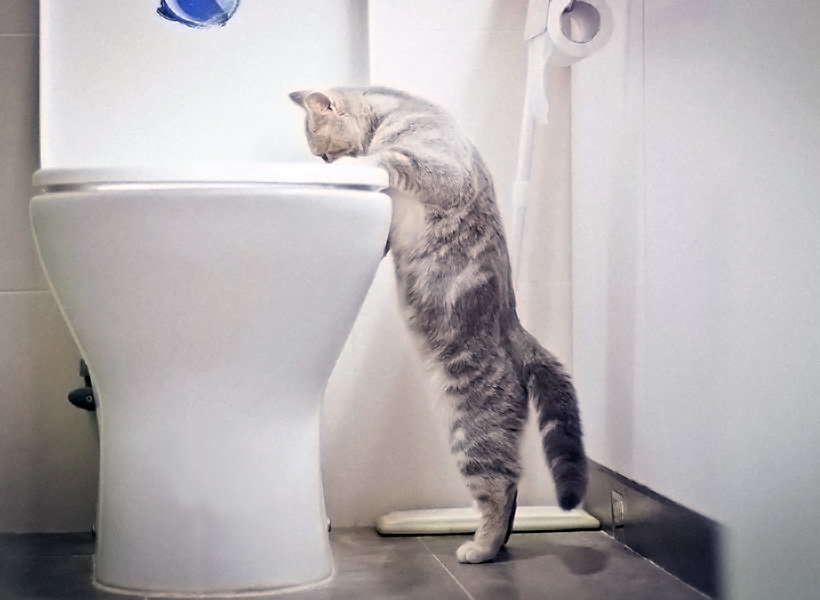Exploring the Harms of Flushing Animal Waste Down the Toilet
Exploring the Harms of Flushing Animal Waste Down the Toilet
Blog Article
What're your beliefs about Why you should never flush dog poop down the toilet?

When it concerns dealing with waste, particularly animal waste, many individuals usually resort to the convenient option of flushing it down the toilet. Nevertheless, this apparently simple solution can have significant consequences for the setting and public health. In this short article, we'll check out why flushing pet waste down the toilet is a bad idea and supply different approaches for appropriate disposal.
Introduction
Proper waste disposal is crucial for preserving ecological sustainability and public health. While it might seem safe to flush animal waste down the toilet, it can result in different concerns, both for the atmosphere and human health.
Threats of flushing animal waste
Ecological impact
Purging animal waste introduces hazardous microorganisms and pathogens right into rivers, which can negatively impact marine communities. These microorganisms can infect water sources and damage aquatic life, disrupting delicate ecological communities.
Public health concerns
Animal waste consists of harmful bacteria such as E. coli and Salmonella, which can position severe health risks to humans. Flushing pet waste down the toilet can contaminate water supplies, leading to the spread of illness and infections.
Alternatives to flushing
As opposed to flushing animal waste down the toilet, there are several different disposal methods that are much more environmentally friendly and sanitary.
Composting
Composting animal waste is an eco-friendly means to dispose of it. By composting, raw material is broken down right into nutrient-rich soil, which can be used to feed yards and plants.
Landfill disposal
Getting rid of animal waste in a landfill is one more option. While not as eco-friendly as composting, it is a much safer option to flushing, as it avoids the contamination of website water sources.
Family pet garbage disposal systems
There are customized family pet waste disposal systems available that securely and hygienically deal with pet waste. These systems often use enzymes to break down waste and remove smells.
Steps to proper pet waste disposal
To make sure appropriate disposal of animal waste, follow these actions:
Scooping and landing waste
Regularly scoop and bag pet waste making use of eco-friendly bags. This prevents waste from polluting the setting.
Making use of marked waste containers
Dispose of bagged pet waste in marked waste containers, such as garden compost bins or landfill bins. Stay clear of flushing it down the commode in all prices.
Cleansing litter boxes and pet dog locations frequently
Routinely tidy litter boxes and pet dog locations to prevent the build-up of waste and germs. Use pet-safe cleaning products to keep hygiene.
Benefits of appropriate disposal techniques
Embracing appropriate disposal techniques for pet waste provides numerous advantages:
Reduced environmental pollution
Appropriate disposal approaches minimize the threat of environmental pollution, securing waterways and ecosystems from contamination
Reduced threat of water contamination.
By avoiding flushing animal waste down the bathroom, the danger of water contamination is significantly decreased, securing public health.
Boosted sanitation and health
Appropriate disposal techniques advertise much better hygiene and health, creating a more secure environment for both human beings and pets.
Conclusion
To conclude, flushing animal waste down the toilet is damaging to the environment and public health. By adopting alternative disposal methods and complying with appropriate waste management techniques, we can lessen the negative influence of animal waste and contribute to a cleaner, much healthier planet.
What To Do With Dog Poo – The Do's And Don'ts Of Disposing Of Faeces
Dog poo bins
Some councils provide dedicated dog waste bins in popular dog-walking areas that can take dog poo that has been bagged but you can legally dispose of dog waste in any public litter bin, as long as it is securely bagged. This also applies to your wheelie bin at home.
Do not flush
Water companies do not recommend flushing dog faeces down the toilet because certain parasites can survive the water processing treatment and are potentially harmful to humans. You should also never consider flushing dog poo that has been bagged down the toilet as the bags will not break down and instead create severe blockages in the sewage system.
In the woods
The Forestry Commission promotes a ‘stick and flick’ method for dealing with waste in the woods. This means finding a stick and using it to flick any poo from off the path so that it is out of the way of other walkers. You could also bury it as long as it is not in an area where there might be livestock.
Livestock
Parasites found in dog poo can be transmitted to livestock if they inadvertently eat infected faeces that has been left on grazing land. This could result in the death of sheep or abortion in cattle so you should always make sure you pick up your dog’s waste in fields where livestock could be present.

Routinely tidy litter boxes and pet dog locations to prevent the build-up of waste and germs. Use pet-safe cleaning products to keep hygiene.
Benefits of appropriate disposal techniques
Embracing appropriate disposal techniques for pet waste provides numerous advantages:
Reduced environmental pollution
Appropriate disposal approaches minimize the threat of environmental pollution, securing waterways and ecosystems from contamination
Reduced threat of water contamination.
By avoiding flushing animal waste down the bathroom, the danger of water contamination is significantly decreased, securing public health.
Boosted sanitation and health
Appropriate disposal techniques advertise much better hygiene and health, creating a more secure environment for both human beings and pets.
Conclusion
To conclude, flushing animal waste down the toilet is damaging to the environment and public health. By adopting alternative disposal methods and complying with appropriate waste management techniques, we can lessen the negative influence of animal waste and contribute to a cleaner, much healthier planet.
What To Do With Dog Poo – The Do's And Don'ts Of Disposing Of Faeces
Dog poo bins
Some councils provide dedicated dog waste bins in popular dog-walking areas that can take dog poo that has been bagged but you can legally dispose of dog waste in any public litter bin, as long as it is securely bagged. This also applies to your wheelie bin at home.
Do not flush
Water companies do not recommend flushing dog faeces down the toilet because certain parasites can survive the water processing treatment and are potentially harmful to humans. You should also never consider flushing dog poo that has been bagged down the toilet as the bags will not break down and instead create severe blockages in the sewage system.
In the woods
The Forestry Commission promotes a ‘stick and flick’ method for dealing with waste in the woods. This means finding a stick and using it to flick any poo from off the path so that it is out of the way of other walkers. You could also bury it as long as it is not in an area where there might be livestock.
Livestock
Parasites found in dog poo can be transmitted to livestock if they inadvertently eat infected faeces that has been left on grazing land. This could result in the death of sheep or abortion in cattle so you should always make sure you pick up your dog’s waste in fields where livestock could be present.

Do you really like reading up on Can You Flush Dog and Cat Poo Down the Toilet?? Write a remark down below. We'd be pleased to hear your suggestions about this page. Hoping that you come back again before long. For those who liked our blog entry please consider to pass it around. I am grateful for your time. Kindly come by our website back soon.
Book An Estimate Now Report this page